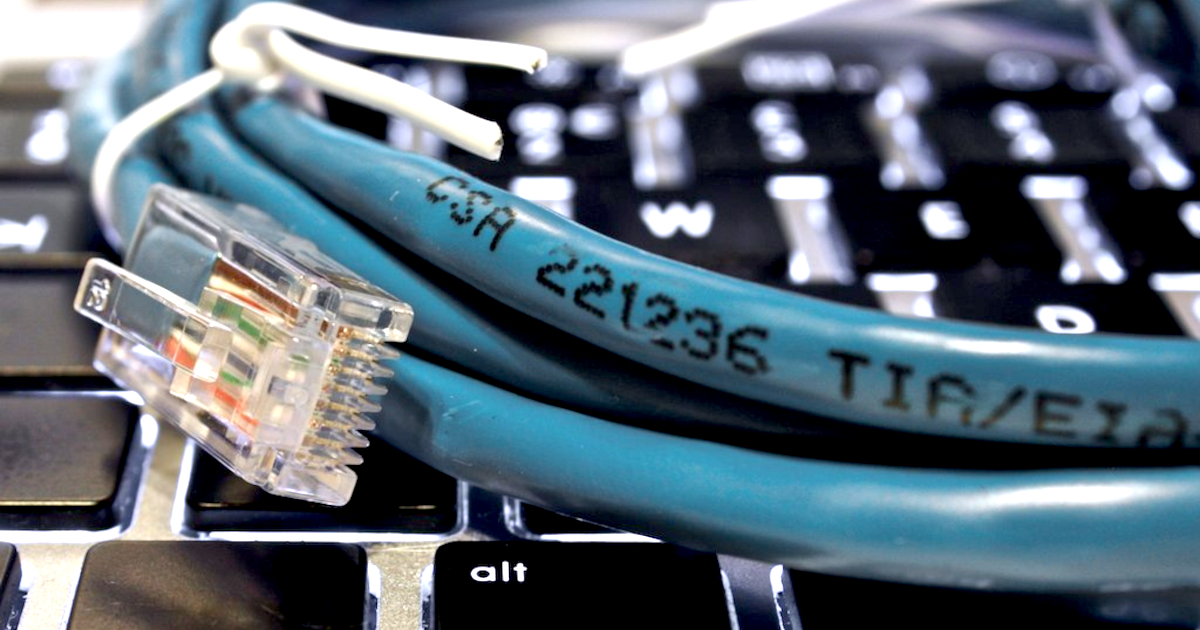A History of the Internet (Infographic)
Jul 1, 2016 | Share
Brand Guides
Before the Internet became the internet, it was just a tiny blip in the peripheral vision of technological advancement. And like any major innovation, it didn’t develop into the pulsing highway of information that has transformed our everyday life overnight. The internet occurred as a series of discoveries, building on one another until they scaled into the digital revolution. It might surprise you to know that our modern network can be traced all the way back to the 1800s, long before Charles Babbage. The internet’s story begins with the first long distance method of communication, the telegraph, and culminates into the dynamic, video-rich tapestry of media and sharing that sits on the cusp of virtual reality today. Come take a tour through the history of the internet and the origins of the most miraculous invention since the printing press.

A History of the Internet
Before the Internet became the internet, it was just a tiny blip in the peripheral vision of technological advancement. And like any major innovation, it didn’t develop into the pulsing highway of information that has transformed our everyday life overnight. The internet occurred as a series of discoveries, building on one another until they scaled into the digital revolution. It might surprise you to know that our modern network can be traced all the way back to the 1800s, long before Charles Babbage. The internet’s story begins with the first long distance method of communication, the telegraph, and culminates into the dynamic, video-rich tapestry of media and sharing that sits on the cusp of virtual reality today. Come take a tour through the history of the internet and the origins of the most miraculous invention since the printing press.
1844 The first telegraph message was sent by Samuel Morse from Washington D.C. to Baltimore, Maryland. It read “What hath God wrought?”. It’s difficult to determine if this stern message was meant as a warning or a celebration. The telegraph is widely considered the first step towards transforming long-distance communication and thus the beginnings of the internet.
1883 Pioneer of computing, Charles Babbage, invents the first printing calculator. His theories would plant the seeds that blossomed into a modern computer programming language and the development of the computer itself.
1936 Alan Turing publishes “On Computable Numbers,” a revolutionary description of what would later come to be called “The Turing Machine,” a precursor to today’s computers.
May 1941 Konrad Zuse invents what is called the world’s first “programmable” computer. It was named the “Turing-complete Z3”. Konrad was not so humble that he didn’t at least try to slide the “z” in at the end there.
October 4, 1957 The Soviet Union launches the first artificial Earth satellite, Sputnik. This causes a flurry of investment in the United States directed towards technology, and deepens the cold war into an outright freeze.
February 7th, 1958 President Dwight D. Eisenhower establishes ARPA (Advanced Research Projects Agency), an organization that would go on to play a vital role in the founding of the internet. It would later come to be known as ARPANET, because apparently ARPA was just not long enough to imply the importance of the agency.
May, 1961 Leonard Kleinrock of MIT publishes a paper called “Information Flow in Large Communication Nets,” which details a process called packet switching that will become the basis of the programming language used to establish internet protocols.
August, 1962 J.C.R. Licklider, considered computing’s “Johnny Appleseed,” begins discussing the establishment of an “Intergalactic Network” in a series of memos. Yes, that’s right, Star Wars fans. The internet was almost called the “intergalactic network.” Dodged that bullet.
1965 The first WAN (Wide area network) is created by Thomas Marill and Lawrence G. Roberts. It communicates via packet delivery. No, not those kinds of packets. Electronic data packets, silly.
1967 Danny Cohen invents the first visual flight simulator. In 1973, he would adapt the simulator to run over ARPANET while he waited for the rest of the world to catch up.
1968 A UCLA team develops host level internet protocols that will become the basis of ARPANET, then waits an entire year to use them for anything worthwhile.
October 29th, 1969 10:30 pm Charley Kline sends the first message using internet protocols from UCLA to Stanford. He types “login,” but only the “lo” is received before the system crashes. An hour later, the complete message was delivered so history wouldn’t make the mistake of believing the first message was intended to be “lol”. It’s funny. You can laugh out loud.
1971 Bob Thomas develops what is considered the first worm, dubbed “The Creeper Virus.” It was not malicious, but caused the following message to be displayed on the network’s computers: “I’m the creeper. Catch me if you can.” Yeah, that’s not creepy. At all.
1972 Ray Tomilson of BBN invents the first email program. He established the protocol of using @ for email addresses that is still used today. Whether you like it or not, we’re stuck with it. Thanks, Ray.
1974 Elizabeth Feinter leads a team at NIC (Network Information Center) that develops the domain naming protocol (.edu, .com, .org, .gov) that the internet uses today.
March 26th, 1976 Queen Elizabeth becomes the first state leader to send an email, proving it’s not just her skills behind the wheel that make her revolutionary.
1982 The Internet Protocol Suite is introduced, which marks the beginning of the backbone of the modern internet that we use today. The word “Internet” was also used for the first time in 1972, shortened from Internet Protocol Suite and capitalized. Currently, the internet has entered into common usage and the term is now used without capitalization. Except if you’re the Oxford English Dictionary. They’re going to hold onto that forever. Or at least until next century.
August 3rd, 1984 The first public e-mail is sent from the United States to Germany and simply reads “Willkommen CSNET,” or “welcome to the internet”.
1985 The Spanning Tree Protocol is developed by Radla Perlman. This set of programming rules lays the foundation for the protocols that allow us to keep our heads and our data up “in the cloud” today.
March 15, 1985 The first .com domain name, symbolics.com, was registered. While the Massachusetts computer company behind the name no longer exists, the domain is still in use today.
November 3rd, 1988 The Morris Worm shuts down over 10% of the Internet. At that time, the internet included only about 60,000 individual computers. Nerds everywhere spend the day pounding their keyboards in frustration.
November 1989 The first dial-up ISP (Internet Service Provider) in the world opened its doors for business in Brookline, Massachusetts. Ironically, it was called The World, and even more miraculously, it still operates today and serves about 2,000 customers.
1990 Alan Entage invents Archie, the first attempt to index the growing internet and a precursor to search engines. He fails to patent it, however, and doesn’t make any profit off the discovery. He does get to enjoy the nickname “The CodeFather” though, which is basically worth its weight in gold.
1991 Al Gore helps pass a bill, known as the High-Performance Computing and Communications Act, that allocates $600 million to creating a national information super-highway. This action would ultimately result in millions of people googling “Al Gore creates the internet” for the next decade with appropriate amounts of skepticism.
August 6th, 1991 The World Wide Web’s creator, Tim Berner-Lee, established the first public website the day before the web debuted to the public. An archived copy of the webpage exists today at the following address: http://info.cern.ch/hypertext/WWW/TheProject.html.
August 7th, 1991 The World Wide Web becomes available to the public for the first time. To the consternation of academics, the first memes and cat videos likely turned up just hours later.
July 18th, 1992 The very first image uploaded to the web was of a band that performed science-themed ditties called the “Les Horribles Cernettes”. Tim Berner-Lee was a fan and it’s easy to hear why if you peruse a sample of their songs. The horrible CERN girls? More like horribly awesome.
January 6th, 1993 The first AOL instant message was sent from Ted Leonsis to his wife. It read “Don’t be scared. It’s me. Love you and miss you.” His wife replied, “This is cool.” And then seconds later “Who is this?” Just kidding. But you know she was thinking it.
November 10, 1993 Mark Andreessen and Eric Bina launch Mosaic, the world’s first web browser. Bina also confirmed that the internet basically ran on a diet of Skittles and Mountain Dew throughout the early 90’s.
January 27th, 1994 Swarthmore student Justin Hall begins the first blog. It still exists today at links.net. Justin refers to his blog in 1994 as “High Stylin’ on the Wurld Wyde Webb.” In his most recent post, he captured a video of himself punching a car. We’ve come a long way, baby.
1994 The White House establishes whitehouse.gov and immediately posts pictures of Clinton’s cat, Socks. Of course they do.
April 13th, 1995 Amazon’s makes its first online sale. It’s a book called Fluid Concepts and Creative Analogies: Computer Models of the Fundamental Mechanisms of Thought. Buy it new today with prime shipping for $16.94. Seriously. Only thirty copies left, people.
September 2nd, 1995 The first item is sold on fledging site Ebay. It’s a broken laser pointer that ends up being auctioned off for $14.83, proving that some people literally will buy anything.
1996 Nokia launches the first mobile phone with web browsing capabilities, the Nokia “Communicator” 9000. Public transit users who have been striving to studiously avoid eye contact for years rejoice.
1996 For the first time, the amount of email surpasses the amount of postal mail sent. It’s been downhill ever since for the United States Postal Service.
September 15, 1997 Google registers their domain name, then proceeds directly to world domination.
1999 Mitchell Baker leads a team at Netscape that cofounds Mozilla and the open source code that would give birth to Firefox. She earns the title “Chief Lizard Wrangler” at the company, along with a place in history.
January 10, 2000 AOL buys Time Warner in what is considered the biggest merger of all time. It is also now referred to as the “worst merger of all time.” And not just because dial-up is now a proverbial dinosaur.
January 15th, 2001 Wikipedia is launched by founders Jimmy Wales and Larry Sanger. You can read about the history of Wikipedia in an article on Wikipedia without feeling an ounce of irony.
March 6th, 2001 Napster is order to shut down access to music from artists who have not given consent for their music to be shared. This legal decision would spell doom for the music sharing site that had ushered in a new era in file sharing just a few months earlier in 2000.
April 28th, 2003 Apple launches the iTunes store, selling over one million songs in their first week. The best seller in the store the very first week was “Stuck in a Moment” by U2. U2 has been stuck on our iPhones ever since.
February 4, 2004 Mark Zuckerberg, better known these days as simply “The Zuck,” launches Facebook from his Harvard dorm room as “The Facebook.” The first person on Facebook was, of course, founder Zuckerberg. But the second person was Chris Hughes, the original spokesperson for Facebook, who went on to run Barack Obama’s 2008 online campaign.
April 23, 2005 User Jawed posts the first video to You Tube, titled “me at zoo”, with elephants swinging their trunks in the background of his short clip. The first of several million cat videos was uploaded just a month later.
2005 The very first Reddit thread is established, although the ability to post comments on the platform wasn’t opened until later. It is entitled “Downing Street Memo,” and the first line reads: “LVCIVS AVGVSTVS FREQVENTS THE SERVICES OF LVCRETIA THE HARLOT (found scrawled on a broken pillar in the rubble field behind this submission)”.
June 28th, 2006 Senator Ted Stevens describes the internet as “a series of tubes” in a speech to Congress opposing net neutrality. Thus begins years of memes and mockery directed at the Alaskan senator.
December 2006 Wikileaks begins publishing classified documents to the public to expose corruption and increase transparency. Julian Assange, the founder of WikiLeaks and self-proclaimed hacker-activist, has been hanging out in the Ecuadorian embassy in London for nearly three years now, probably eating Cheetos and binge-watching Mr. Robot.
November 4th, 2008 Barack Obama wins the 56th presidential election. Many political experts believe it was the campaign’s use of social media and online fundraising that enabled it to successfully elect the first black president into the Oval Office. He’s been winning the internet ever since.
July 16, 2010 Kevin Systrom, CEO and founder of Instagram, posts the first image to the app. It’s a picture of a dog and a foot encased in a flip-flop. The foot belongs to Kevin’s girlfriend at the time. The origins of the perky golden retriever in the photo are unknown, but we’re pretty sure he’s the original #dogsofinstagram.
January 18th, 2012 Both large and small websites throughout the internet go down in the largest act of online activism yet seen, an organized campaign to protest a bill called SOPA (Stop Online Piracy Act). Opponents of the bill say the strict copyright laws would have crippled free speech and innovation on the internet. It fails to pass the Senate.
2013 Memes and viral videos abound across social media channels, including twerk fails, the Harlem Shake, Grumpy Cat, and plenty of people who now know what the fox says. Amazon also terrifies everyone by threatening delivery via drones.
February 7th, 2014 Google acquires smart-thermostat company, Nest, for 3.4 million and kicks off a flurry of investment in the developing IoT (Internet of Things).
August 6th, 2015 Time magazine runs a cover story on virtual reality and Oculus in the wake of Mark Zuckerberg’s unprecedented $2 billion purchase of the tech start-up the year before. Everyone has a difficult time not laughing at loud at the vision of a grown man prancing around his living room blinded by a bulky headset.
June 1st, 2016 The New York Times announces it will begin using the internet instead of the “Internet.” This condescension to common usage is considered long overdue and finally brings us into the present, where the internet is considered as ubiquitous as water. Welcome to the web, friends.
Author - HSI Staff
Kaz is a writer, blogger and social media junkie. She uses her tenacity to investigate the best of the Internets.





